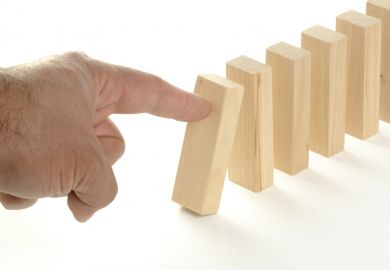The pandemic’s harrowing first wave did not generate a marked decline in the working conditions of Australian researchers, despite predictions that their sector would be among the worst affected, a report suggests.
A survey of almost 1,500 scientists has found only a minor decline – and in many cases slight improvements – in indicators such as morale, workload and fatigue.
The study was conducted in May. The same month, a “rapid research report” warned that the pandemic would strip Australia of the equivalent of 14,000 full-time researchers, amplifying the workload of those who remained and disproportionately affecting female staff.
But the new survey, overseen by representative groups Science & Technology Australia (STA) and Professional Scientists Australia, has found only marginal increases in workload and fewer signs of burn-out than did an equivalent study a year earlier.
While 46 per cent of respondents reported that morale in their organisations had declined over the previous 12 months, that figure compared with 50 per cent a year earlier. Fifty-five per cent said worker fatigue had increased, down on 58 per cent the previous year.
The survey found that average working hours had expanded by just 12 minutes a week. Average wage growth had also improved slightly, from 2 per cent over the 12 months to June 2019 to 2.2 per cent a year later. Fifty-three per cent of respondents said they were satisfied with their remuneration in 2020, up from 47 per cent in 2019.
Perceived working conditions of female staff deteriorated between the two surveys, with the gender pay gap widening from 14 to 17 per cent. Forty-one per cent of women reported that they had experienced gender bias or discrimination over the preceding three years, up from 38 per cent in the 2019 survey.
But while 22 per cent of female respondents indicated that they were considering permanently leaving the profession, this was well down on the 31 per cent who had given a similar answer in a 2015 survey of female STEM workers.
STA chief executive Misha Schubert said “important progress” had been made in supporting women in science and technology, thanks to “strategic systemwide efforts” by governments, universities, private sector employers and representative organisations. “All of that cumulative work is having a tangible impact, [but] there is more work to be done.”
Ms Schubert said the survey had been conducted too early to pick up many of the worst impacts of the pandemic. Pay levels, for example, often reflected enterprise agreements struck a year or more beforehand.
“Wages for the majority of scientists had not yet experienced a stark downturn at the point this snapshot was taken,” the report noted. “However, we anticipate scientists’ salaries in the coming 12-month period are unlikely to be immune from the effects of the health crisis and the economic impact of the pandemic.”
Ms Schubert said Covid had generated “crosscurrents” for researchers. “On one hand you’ve seen the science workforce experience similar shocks and buffeting to other parts of the economy – challenges with workload volume, greater job insecurity and having to supervise children doing distance learning at home. But at the same time the public regard for science and scientists has possibly been more visible than ever.”
Register to continue
Why register?
- Registration is free and only takes a moment
- Once registered, you can read 3 articles a month
- Sign up for our newsletter
Subscribe
Or subscribe for unlimited access to:
- Unlimited access to news, views, insights & reviews
- Digital editions
- Digital access to THE’s university and college rankings analysis
Already registered or a current subscriber?








